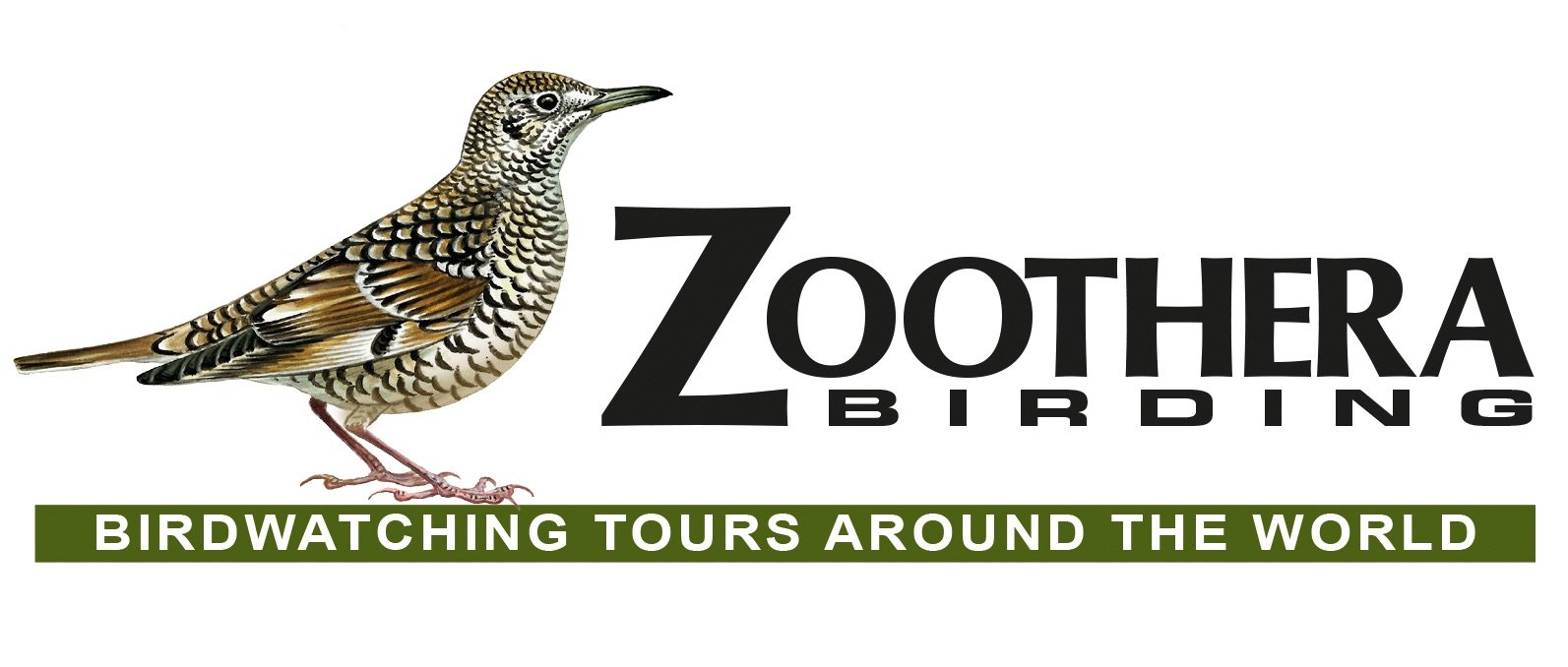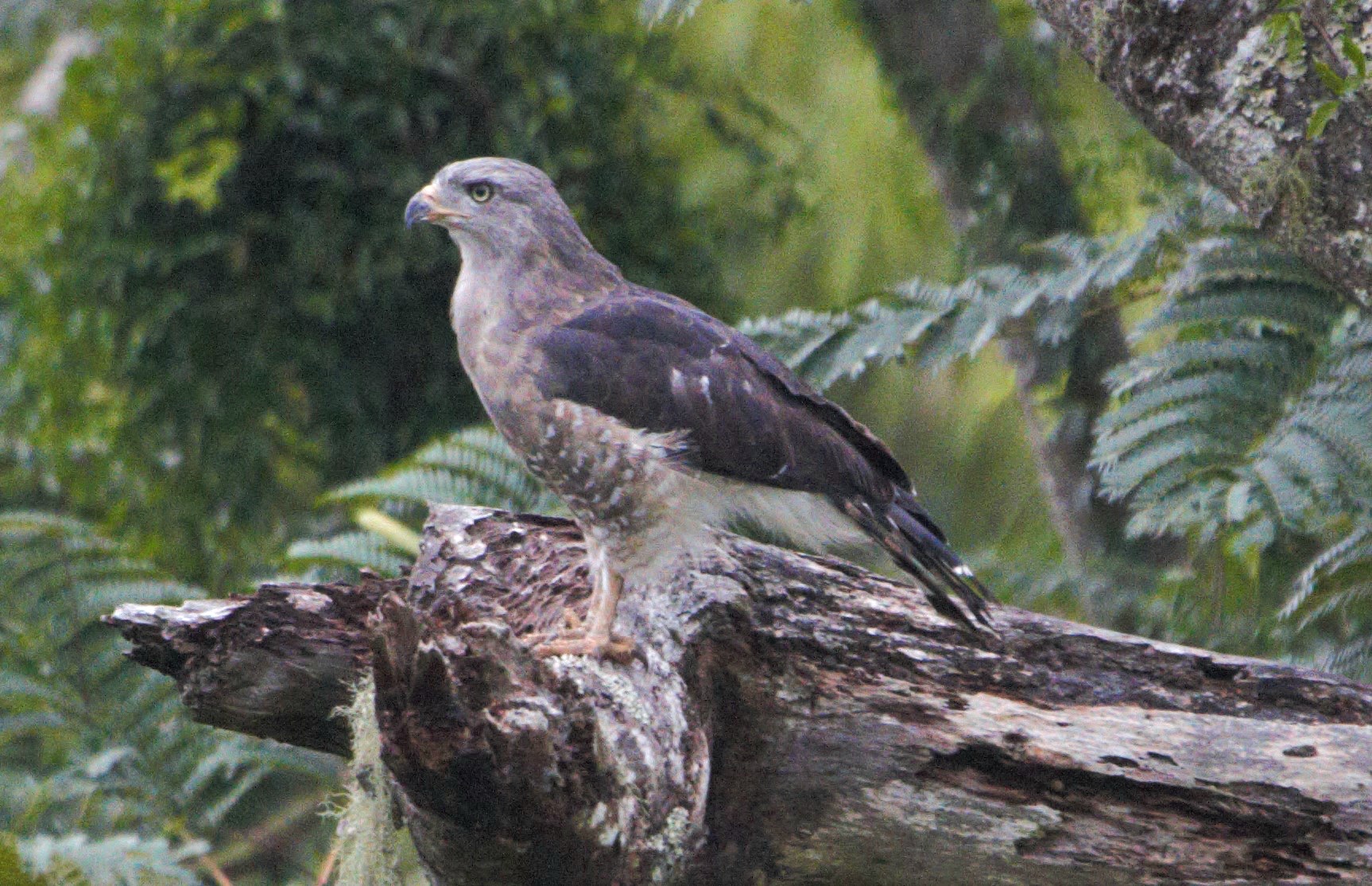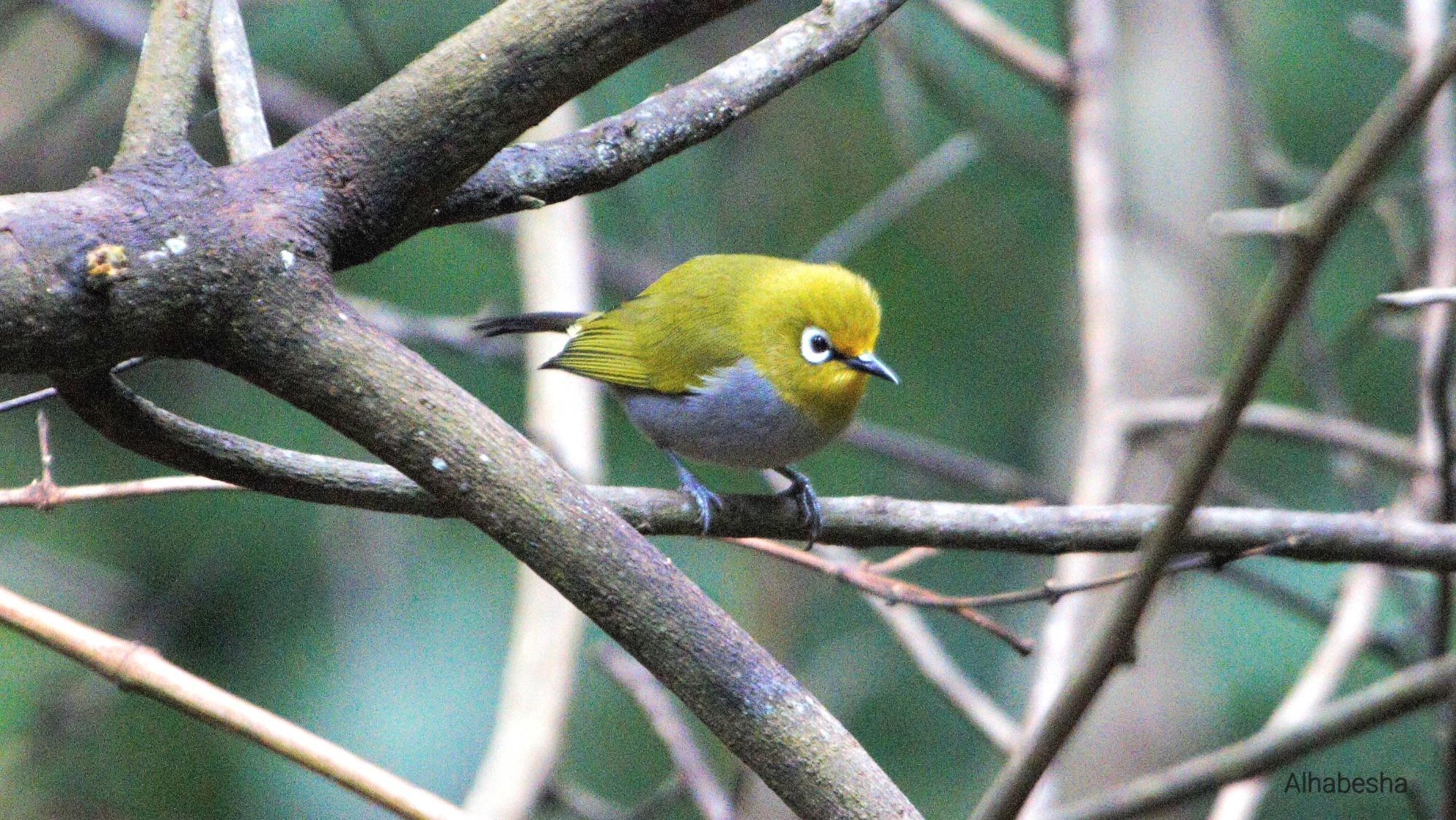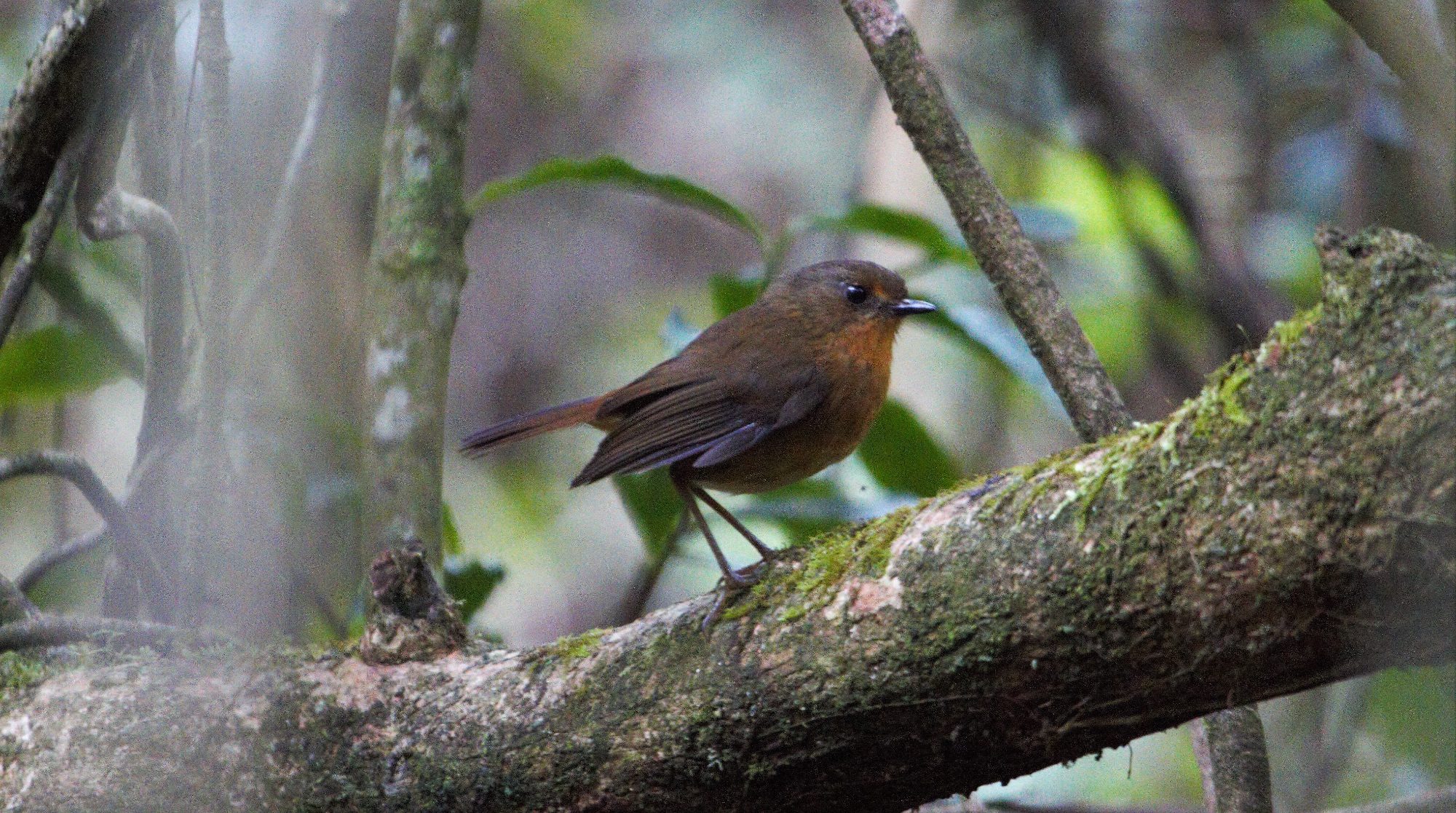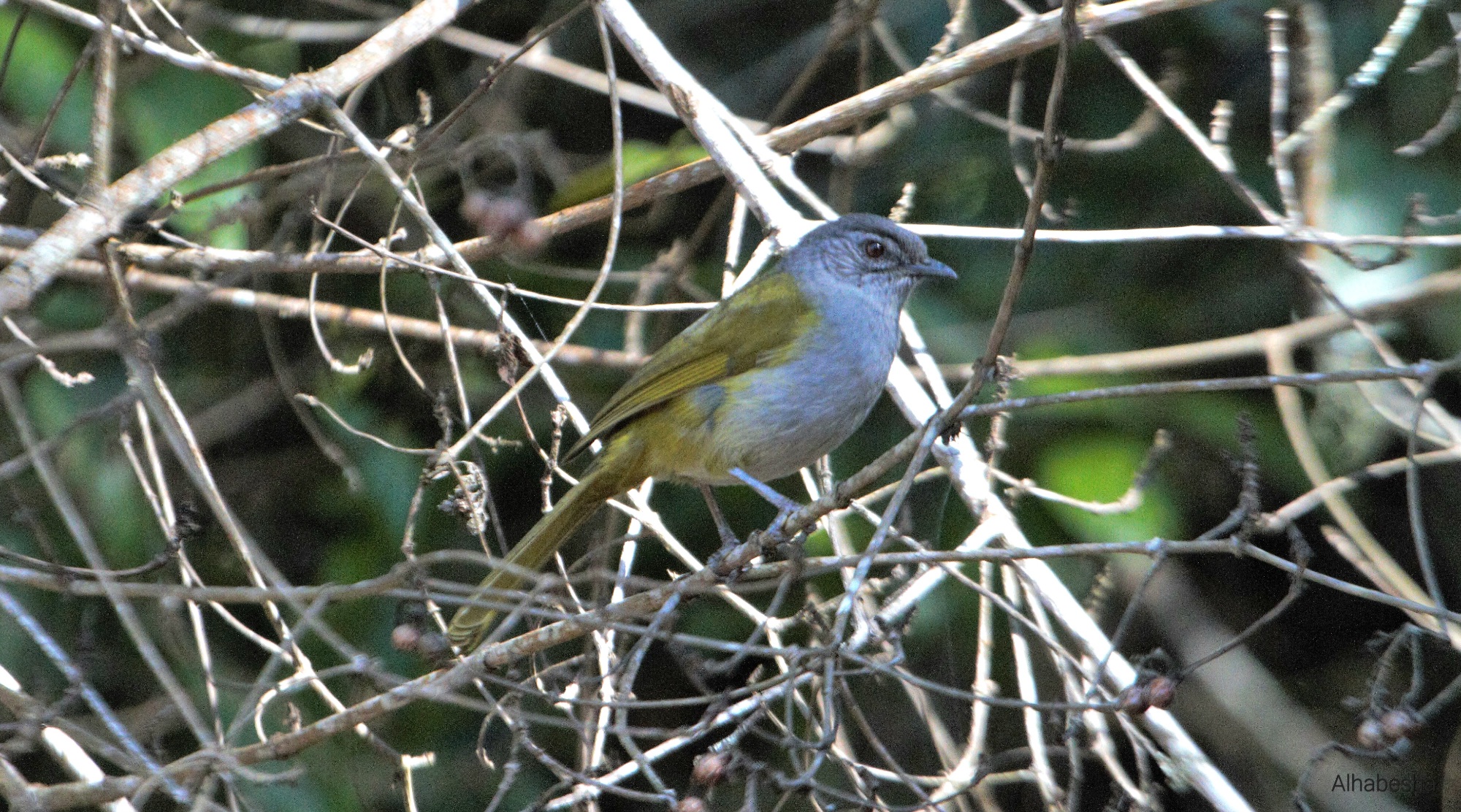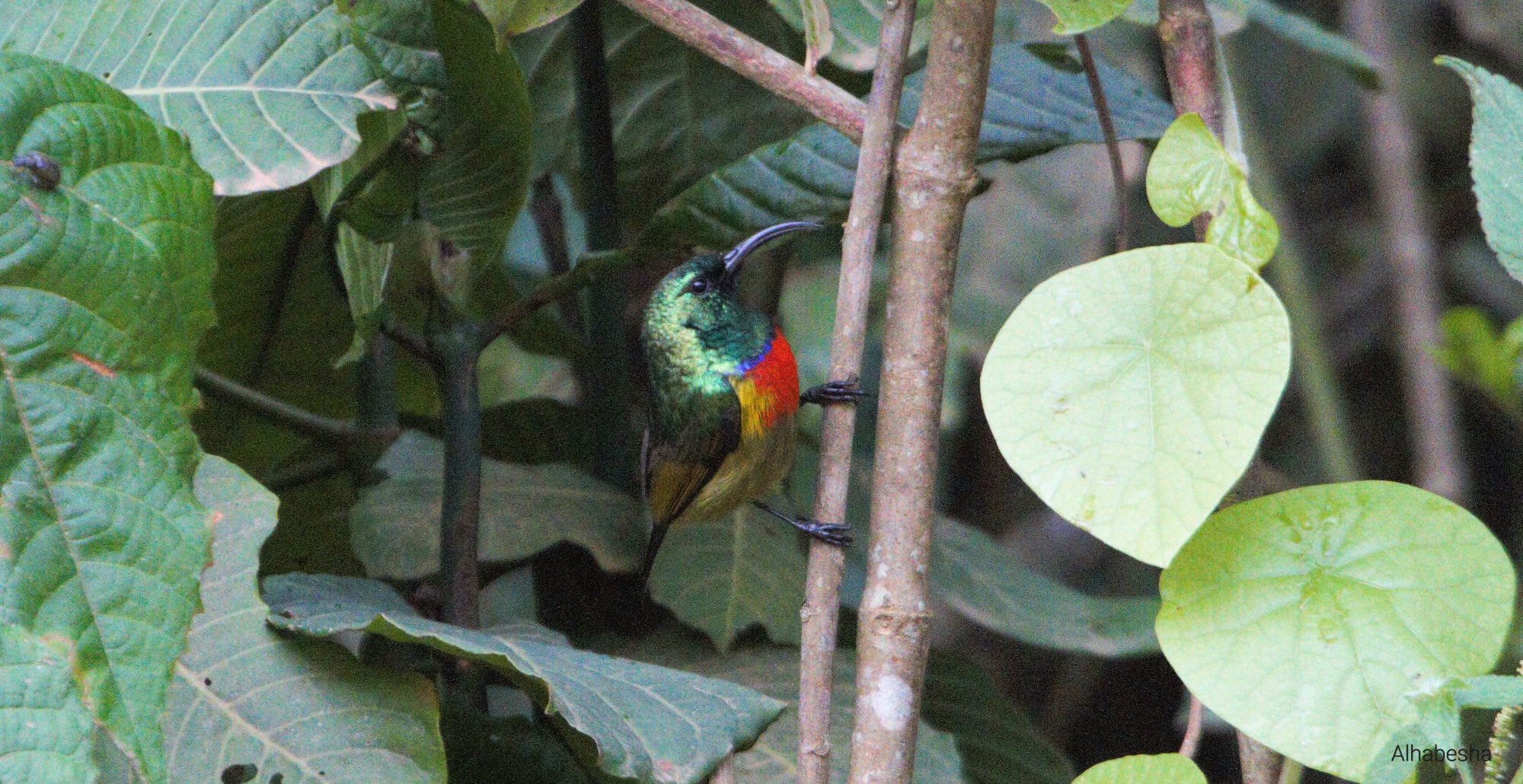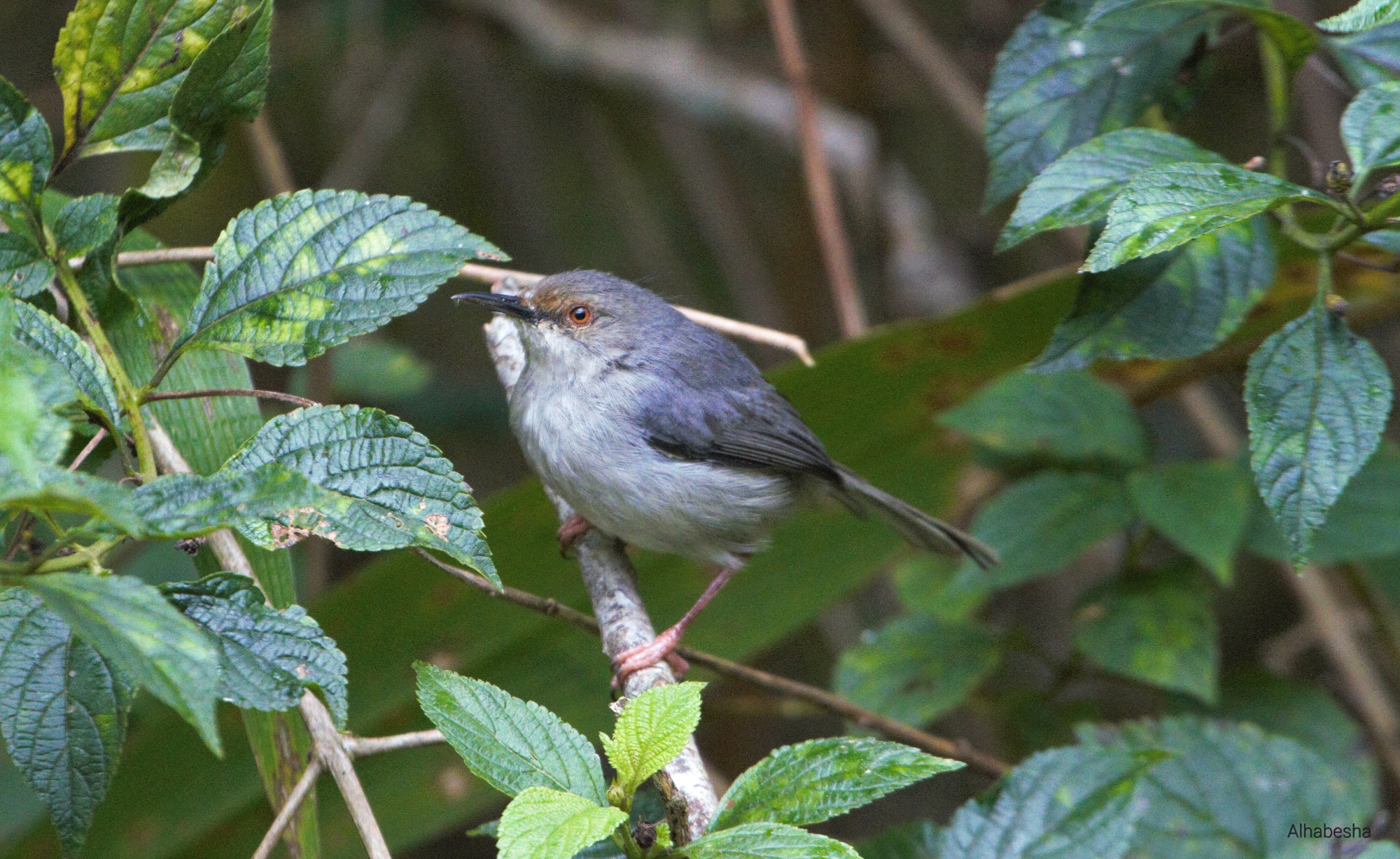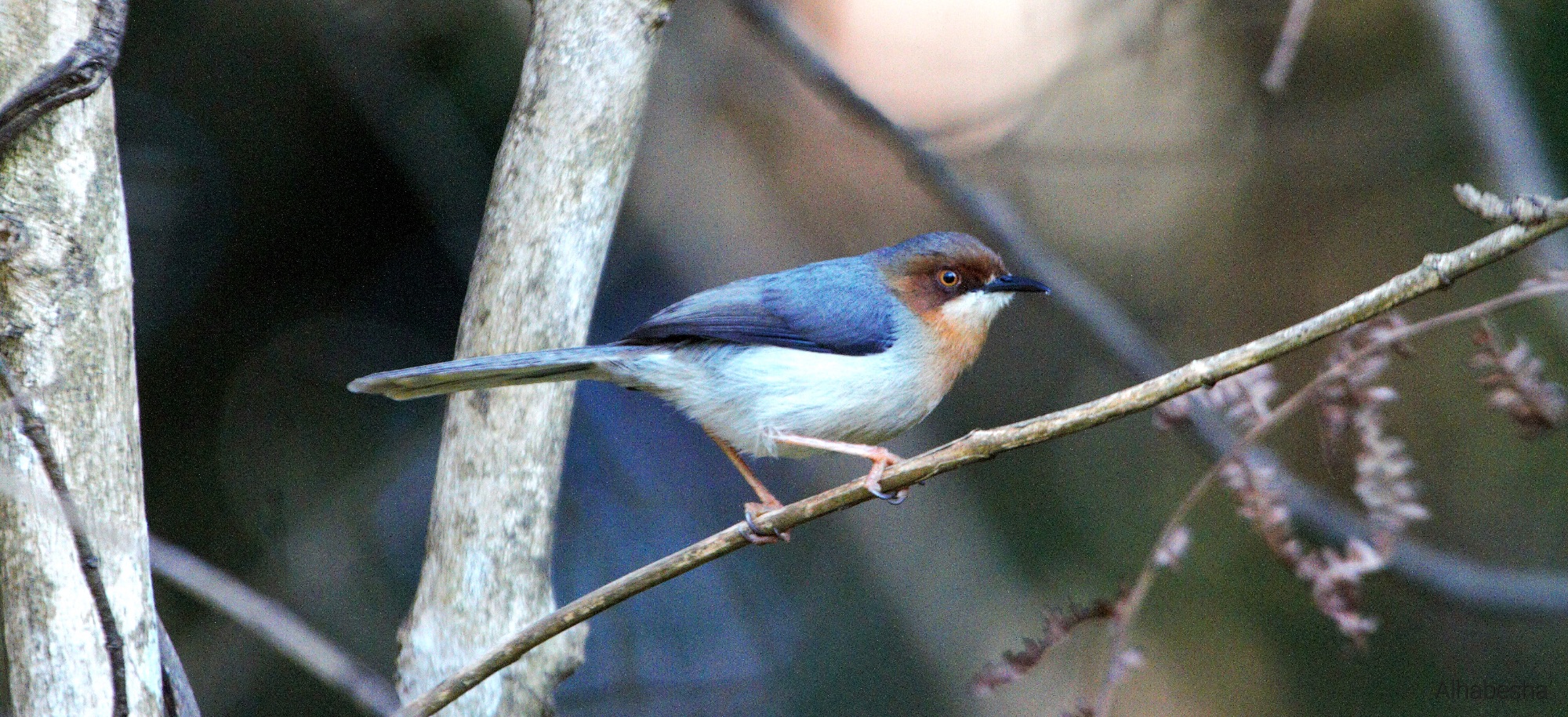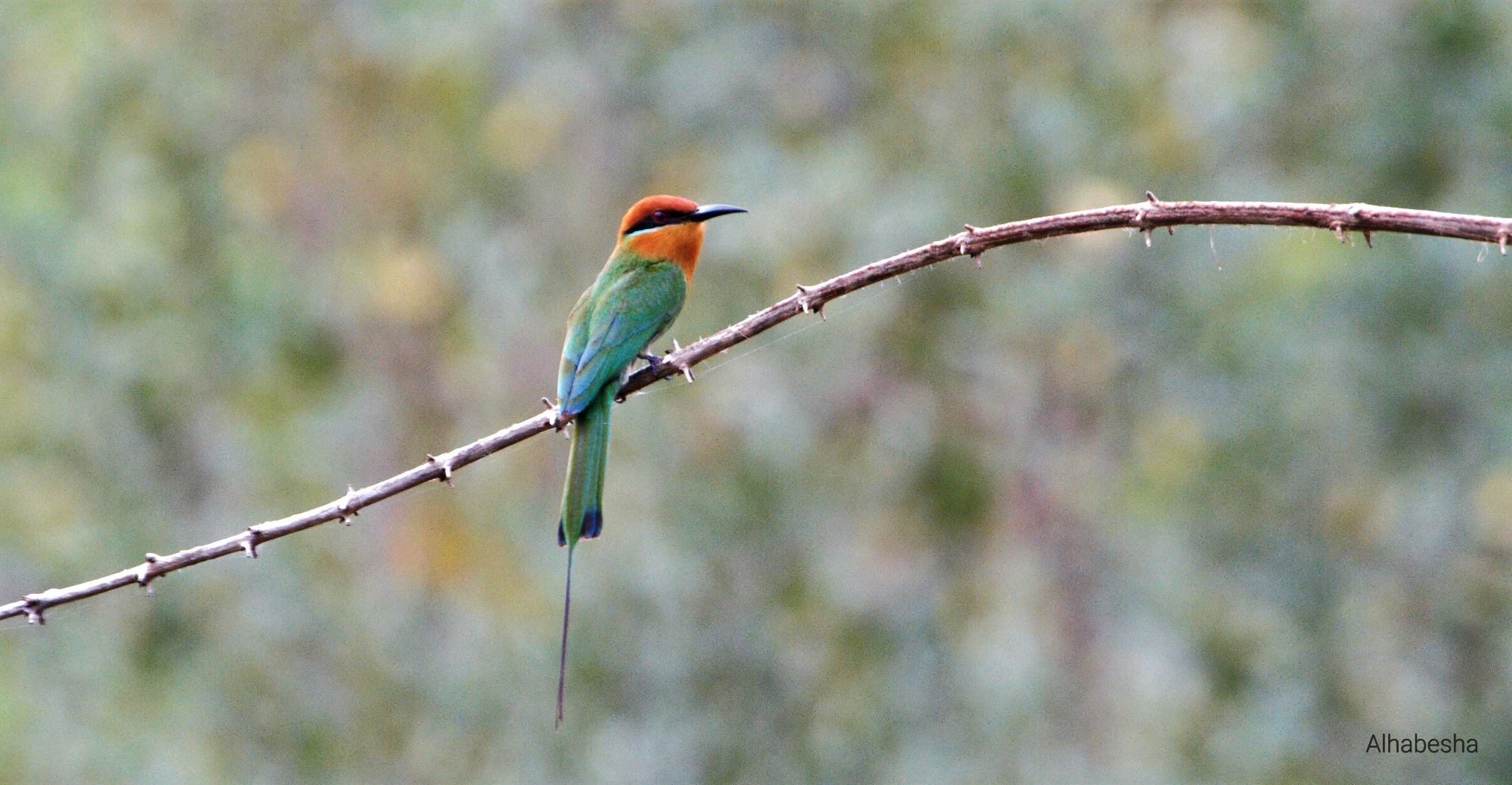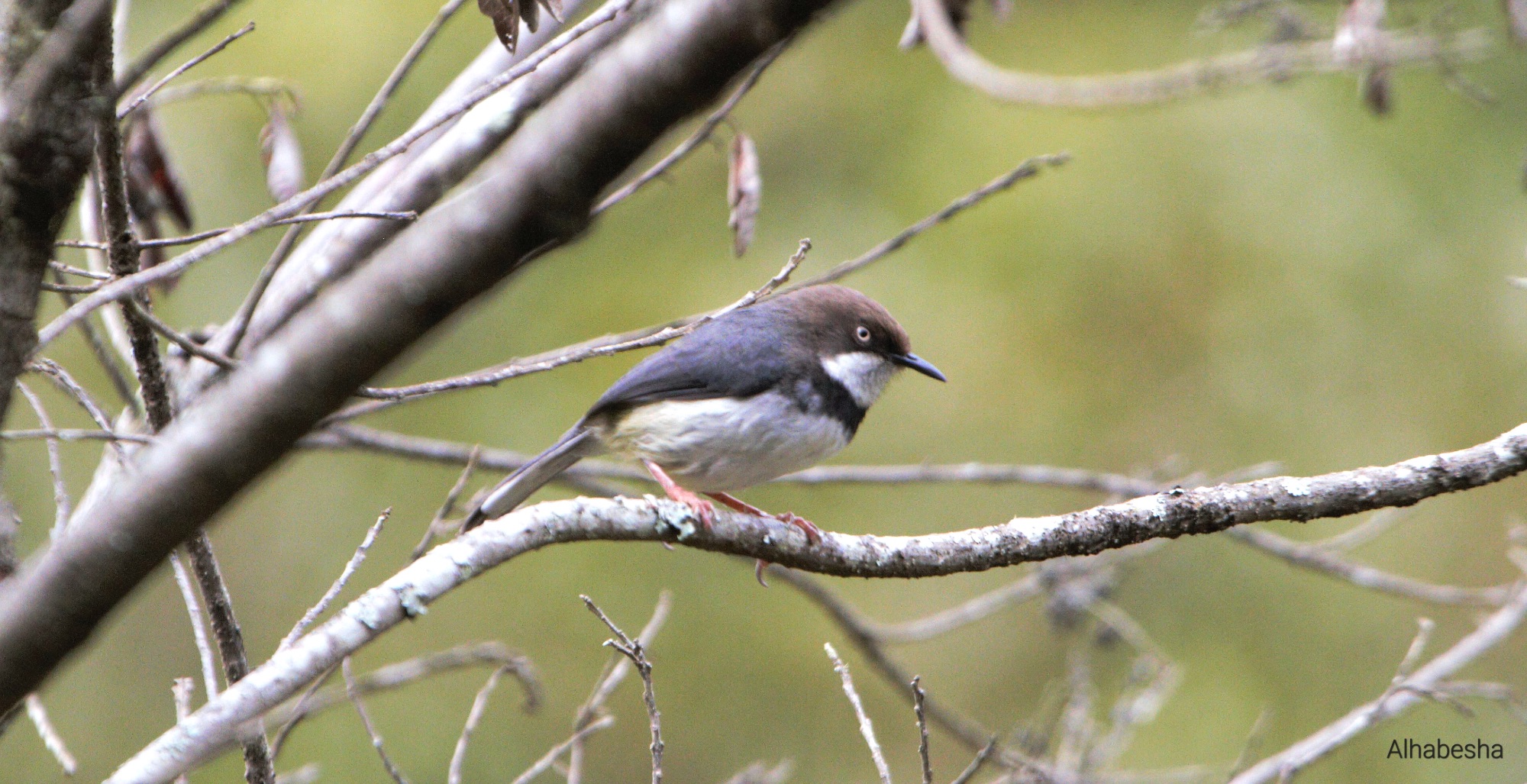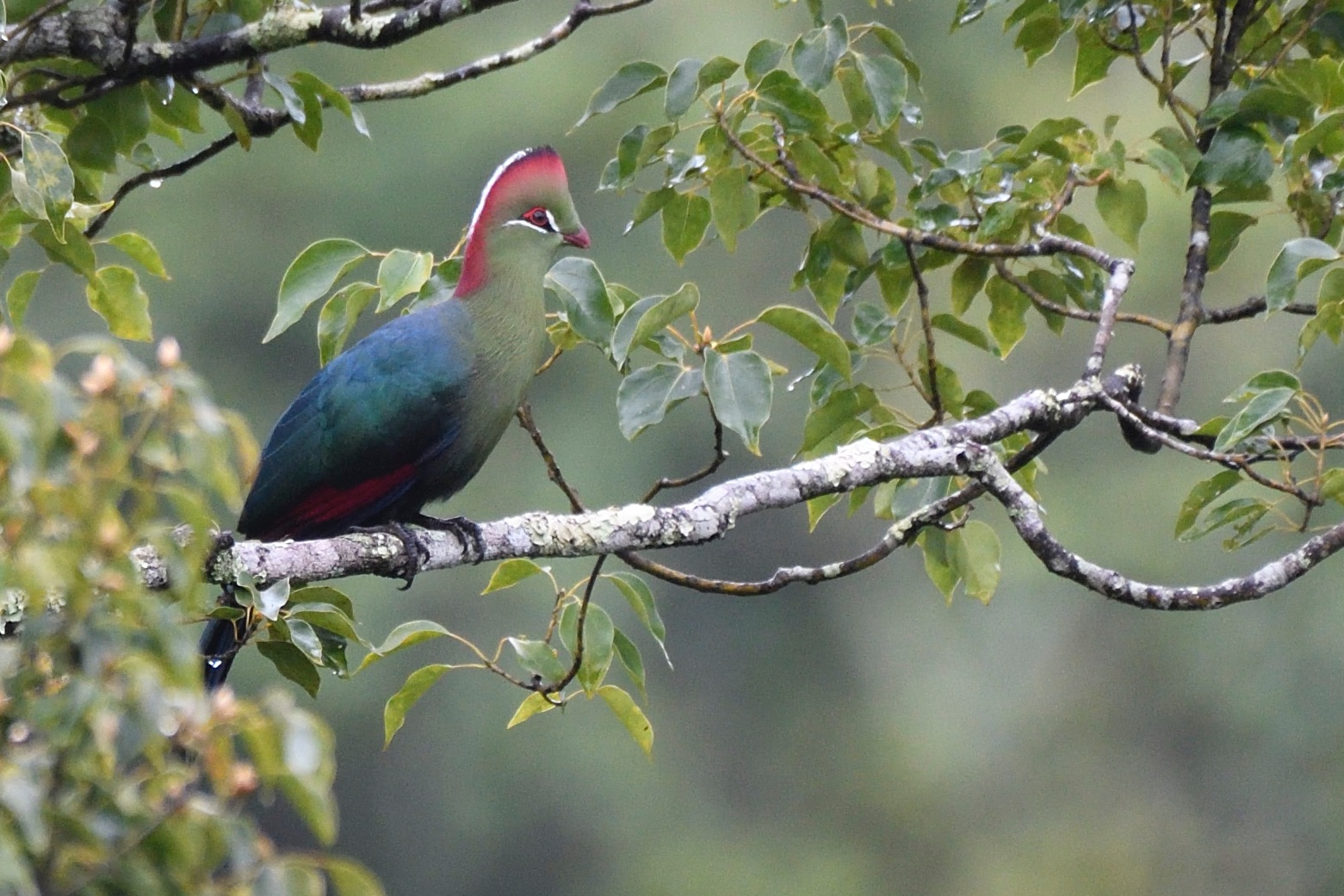TANZANIA - THE EASTERN ARC MOUNTAINS TOUR
DAY 1 ARRIVAL IN KILIMANJARO - 20th July
Arrival at Kilimanjaro International Airport (KIA) and transferred to a good hotel in Arusha.
DAY 2 NYUMBA YA MUNGU - SOUTH PARE MOUNTAINS
Early this morning we will drive towards the South Pare Mountains, making our first birding stop in Nyumba Ya Mungu, an area of open plains, brush country and a reservoir where we can see a wide variety of species. Key targets here include Pink-breasted Lark, Scaly Chatterer, Pringle´s Puffback, White-headed Mousebird, Zanzibar Sombre Greenbul, Pygmy Batis, African Bare-eyed Thrush, Red-fronted Warbler, Tsavo Purple-banded Sunbird, Black-necked Weaver, Southern Grosbeak Canary and Somali Bunting. There are many more widespread and common African species present here such as a good selection of herons & egrets, wildfowl, Augur Buzzard, African Fish-Eagle, Tawny & Long-crested Eagles, Lanner Falcon, Red-bellied Parrot, White-browed Coucal, African Palm & Little Swifts, Von Der Decken's Hornbill, Red-fronted Tinkerbird, Slate-coloured Boubou, Rosy-patched Shrike, White-browed Scrub Robin, Abyssinian Scimitarbill. Spotted Morning-Thrush, Grassland Pipit, Swahili Sparrow, Yellow-spotted Petronia, Eastern Violet-backed, Hunter’s, Variable & Beautiful Sunbirds, Pale White-eye and Purple Grenadier.
We will head up the South Pare Mountains later today and look for the endemic South Pare White-eye, along with Hartlaub's Turaco, Black-fronted Bushshrike, Singing Cisticola, Black-headed & Bar-throated Apalis (race pareensis), African Hill Babbler, Evergreen forest Warbler, Placid Greenbul, Usambara Double-Collared Sunbird, Green-winged Pytilia, and Tsavo Sunbird amongst others. Night near Same.
Day 3 MKOMANZI AREA - WEST USAMBARA MOUNTAINS
First thing this morning we will head to a small woodland just outside Mkomazi National Park, where we will search for species such as Black-throated & D`Arnaud´s Barbets, Eastern Black-headed Batis, Grey Wren-Warbler, Tsavo, Black-bellied & Hunter´s Sunbirds, Fischer´s Starling, Straw-tailed Whydah and more. Once we've finished here we will head to the West Usambara Mountains where we should arrive in time for a late afternoon birding session and possibilities include Blue-capped Cordon-bleu, Cliff Chat, Grey-Olive Greenbul and East Coast Boubou amongst others. Night at Muller's Lodge.
DAY 4 WEST USAMBARA MOUNTAINS - MAGAMBA FOREST
What an exciting day we have in store with a full day birding in the West Usambara Mountains at Magamba Forest. Major targets for us include Usambara Double-Collared Sunbird, Usambara Akalat, Usambara Weaver, Montane Tiny Greenbul, Usambara Thrush, Red-capped Forest Warbler, Füllebon’s Black Boubou, , Spot-throat, Montane Tiny & Eastern Mountain Greenbul (usambarica race), Usambara Weaver and at dusk we will try for Usambara Nightjar.
There's plenty of other, more widespread species present here including Crowned Eagle, Mountain Buzzard, Ayres's Hawk-Eagle, Olive & Eastern Bronze-naped Pigeons, Lemon Dove, Barred Long-tailed Cuckoo, Hartlaub's Turaco, Bar-tailed Trogon, Green Barbet, Forest Batis, Grey Cuckooshrike, Black-fronted Bushshrike, White-chested Alethe, Forest (Short-tailed) Batis, Cinnamon Bracken & Evergreen Forest Warblers, Red-capped Forest Warbler, Yellow-throated Woodland Warbler, Eastern Mountain, Placid, Shelley's, Yellow-streaked and Stripe-faced Greenbuls, Oriole-Finch, Red-faced Crimsonwing and so much more. Night at Muller's Lodge again.
DAYS 5 - 7 MAGAMBA FOREST - EAST USAMBARAS - AMANI
We will have another morning birding in the fabulous West Usambaras at Magamba Forest to mop up some of the trickier species we still need - maybe Eastern Golden Weaver in the lower areas. Then we will drive to Amani Nature Reserve in the East Usambara Mountains, swinging by an area to try for Coastal Cisticola and Zanzibar Red Bishop. After a bit of a climb our second main stop of the journey will put us in a good area for species such as Fischer’s Turaco, Mombasa Woodpecker, Green-headed Oriole, Pale Batis, Eastern Nicator, Green Tinkerbird, Fischer’s Greenbul, Black-headed Apalis, Lowland Tiny Greenbul, Little Yellow Flycatcher, Uluguru Violet-backed Sunbird, Usambara Hyliota, Plain-backed Sunbird, Red-tailed Ant-Thrush and Red-headed Bluebill.
Once at our camp site the birding could be fast and furious and there promises to be many new species for us. Over these next couple of days we will search for Banded Green Sunbird, Amani Sunbird, Red-tailed Ant-Thrush, Shelley´s Greenbul, Green-headed Oriole, Usambara Eagle-Owl (unfortunately now lumped in Fraser's Eagle-Owl), Southern-banded Snake Eagle, Fischer´s Turaco, Green-backed Woodpecker, Usambara Hyliota, Tanzania Illadopsis (now split from Pale-breasted Illadopsis), Southern Yellow White-eye, Moustached Tinkerbird, and Black-bellied Starling..
We will also visit Kwamkoro Tea Plantations for 3 special birds: Kretschmer´s Longbill, Long-billed Forest Warbler, and Sharpe´s Akalat.
Amongst many other possibilities during our stay here we could also see Southern Banded Snake-Eagle, African Wood Owl, Trumpeter Hornbill, Green Tinkerbird, White-eared Barbet, Scarce Swift, East Coast Boubou, Chestnut-fronted Helmetshrike, Blue-mantled Crested Flycatcher, Black-and-white Shrike-Flycatcher, Black-headed Apalis, Little Rush Warbler, Plain-backed & Purple-banded Sunbird and Placid Greenbul, Kenrick's Starling. The first night will be at Amani Nature Reserve HQ in basic lodge (1400m), followed by 2 nights camping..
DAYS 8 - 9 ULUGURU MOUNTAINS
The first target of the day is the patchily distributed Böhms Bee-eater, before setting out on the long drive to Morogoro, (stopping for Brown-breasted Barbet around the town), the gateway to the spectacular Uluguru Mountains (2600m), and our base near the village of Tegetero, but the last part of the drive is on a very bad road so progress will be slow. Once we have arrived we will meet our porters and start walking to the campsite, which is around a one and a half hour undulating walk but not too difficult. Once we are settled in to our campsite let the birding begin!
Our main target will be the mega-rare Uluguru Bushshrike, a species only found in the Uluguru Mountains. But it's a tough species and will take a lot of searching. Other special species in these mountains include Livingstone's Turaco, the endemic Loveridge’s Sunbird, Bertram’s Weaver, Sharpe’s Akalat, Fraser's Eagle-Owl, Dark Batis, Uluguru & Shelley’s Greenbul, Orange Ground-Thrush, Spot-throat, White-winged & Chapin’s Apalis, Striped Pipit and more.
This area and over the next few days could give us some 'so-called' padders to bump up our list such as African Hawk-Eagle, Mottled & African Black Swifts, Cape Robin-Chat, White-eyed Slaty-Flycatcher, Angola Swallow, Trilling Cisticola, Mountain Wagtail, Mountain Thrush and Yellow Bishop to name just a few. 2 nights at campsite.
Day 10: TEGTERO - BUNDUKI (ULUGURU MOUNTAINS)
There's still going to be new birds to find before we pack up the camp and start walking back to where we left our vehicles. Then we will drive to the village of Bunduki on the other side of the mountain and camp again for a night.
Day 11: BUNDUKI - ULUGURU MOUNTAINS.
We have an exciting morning's birding in the Bunduki area of Uluguru Nature Reserve. It's a reasonably tough hike to get to the best patch of forest, which gives us options to look for Winifred’s Warbler, Olive-flanked Gound-Robin, Uluguru Greenbul, Chapin’s Apalis, Dark Batis, Loveridge’s Sunbird, Livingstone's Turaco and Bertram's Weaver amongst others. Night at Tanswis Lodge, Mikumi.
Day 12: MIOMBO WOODLAND ,
We have a full morning's birding before driving to the very nice Hondo Hondo Camp for the evening try for the Pel’s Fishing-Owl. Targets today include some great birds such as Speckle-throated Woodpecker, Collared Palm Thrush, Hofmann’s Sunbird, Pale Batis, Cinnamon-breasted Tit, Stierling’s Wren Warbler, Eastern Black-headed Batis, Yellow-bellied Hyliota, Livingstone’s Flycatcher, Long-tailed Fiscal, Miombo Starling and Magpie Mannikin. Night at Hondo Hondo Camp.
Day 13 KILOMBERO VALLEY
This morning we will explore the flood plain of the Kilombero River to look for the recently described Kilombero Weaver. In this unique area there's also the mega rare White-tailed Cisticola and Kilombero Cisticola, both of which have yet to be formerly described. And who knows what else is to be discovered in this remote area?
Other open country and marsh dwellers present include Great White Pelican, Reed Cormorant, several species of heron & egret, Hamerkop, Spur-winged Goose, Black Crake, White-backed & White-headed Vultures, Brown Snake-Eagle, Bateleur, White-crowned & African Wattled Lapwings, Three-banded Plover, African Skimmer, Coppery-tailed Coucal, White-fronted & Little Bee-eaters, Lilac-breasted Roller, Grey-rumped Swallow, Arrow-marked Babbler, Marsh Tchagra, Siffling Cisticola, Red-winged Warbler, Zanzibar Red Bishop and Zebra Waxbill amongst others. We will then return to Hondo Hondo for some easy afternoon birding and will also try to find the stunning Pel’s Fishing-Owl and Lesser Seedcracker.
Day 14: HONDO - UKAGURU MOUNTAINS
Today is flexible depending on what species we wish to target. But it's going to be a long drive today to reach our next campsite.
Day 15 UKAGURU MOUNTAINS.
Two very special birds bring us to the seldom-visited Ukaguru Mountains: Rubeho Akalat and Rubeho Warbler. The akalat is highly localised in the understory of primary and secondary montane forest in a narrow range along the Rubeho and Ukaguru (and possibly Uluguru) mountains escarpment between 1800 and 2200 meters. And the rare warbler is only found in the Ukaguru Mountains. Whilst here we could also find Chapin’s Apalis, Moreau´s Sunbird, Yellow-throated Greenbul, Dark Batis and Red-faced Crimsonwing. Night in Morogoro Hotel.
Day 16: END OF MAIN TOUR - PEMBA ISLAND EXTENSION - 4th August
Today we will drive to Dar-es-Salaam where the main tour will end or continue to Pemba Island for a short extension.
PEMBA ISLAND EXTENSION 4th - 6th August
Pemba Island is located approximately 50 kilometres off the Tanzanian coast and is home to four endemics: Pemba Scops-Owl, Pemba Green Pigeon, Pemba White-eye and Pemba Sunbird. Other species present are Crab Plover, White-cheeked and possibly Saunders's Tern, Mangrove Kingfisher, Dickinson's Kestrel, and a variety of commoner species.
